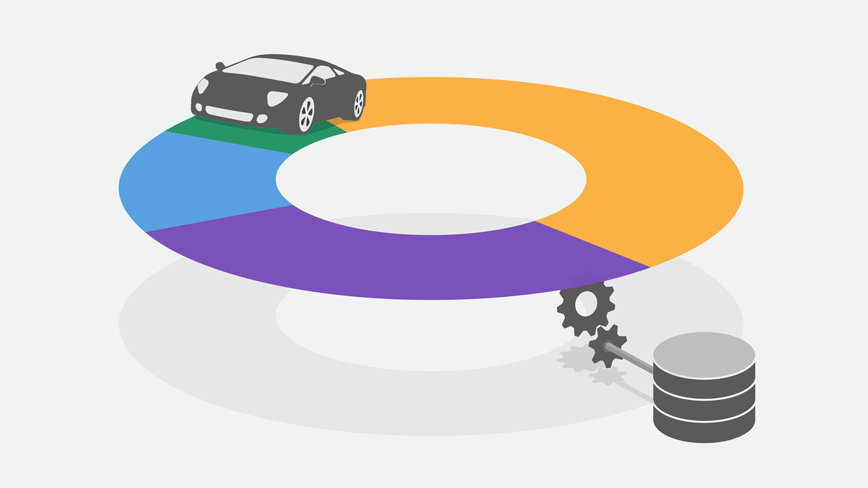The automotive industry is surpassing its former heights of the 1960s by offering desirable cars in all shapes, sizes and prices — all thanks to harnessing the power of consumer data.
A period of stagnant innovation in the ‘90s characterized by the domination of massive SUVs has given way to more practical crossovers and other such vehicles that can actually address the needs of the consumer market. While SUVs in 2000 sold around 2.1 million units, crossovers in 2013 moved more than double that, with true SUV sales shrinking below 1 million. Developments like these signal a shift towards melding form and function into one seamless, beautiful whole.
Designing Better Cars
Big data is helping drive practical decision-making. Information from service records, vehicle testing, assembly line audits and multiple other sources reveal potential design flaws and point out what makes cars perform better and more desirable to drive.
General Motors is taking this a step further by pulling data from vehicles in the field. One of their newest features is an OnStar service that broadcasts a 4G LTE hotspot, allowing occupants to enjoy Wi-Fi Internet wherever they go. While this has been a triumphant selling point, the real benefit is seen at the corporate headquarters. At the same time that hotspots are broadcasting data, they are also retrieving it from the vehicle’s onboard telematics computer and sending it to GM.
GM can use this information to determine how performance is affected in real world conditions, such as how road dust in Georgia can damage air intake. When GM considers changes for the next model year, they might opt for more protective casings or a better filtering system. Decisions like these have helped GM save an average of $800 per car from targeted cost cutting and preventative maintenance warnings.
Another example of a data-driven movement in the automotive industry is Audi, BMW and Daimler recently acquiring HERE, Nokia’s mapping division. It is a strategic move that will better allow the car companies to utilize high-definition maps and data, helping vehicles have safer and easier travel experiences.
Fueling More Consumer Friendly Dealerships
While data is helping manufacturers make better cars, it is also helping sell more. GM uses aggregated dealer data to reveal insights such as how far a person is willing to drive in order to purchase a new vehicle. Their models discovered that someone will drive two hours to find a better deal on a car, but they are much less willing to drive that far when their car needs servicing. These figures help GM determine where the optimal dealer locations should be and how much of each model they should stock based on the region’s historical sales.
All of these insights are powered through location-enabled analytics using GIS tools, such as ArcGIS. “Location analytics helps us to map everything, and do more with less,” proclaims GM Network Analytics Manager Bruce Wong. “We can bring all the data into it to make better decisions, understand customers and provide better service.” Brands that do not have the resources to build their own in-house solutions using third-party software as GM did are tapping companies like Place IQ or CityBridge to deliver consulting solutions for them.
Marketers use this same data-enabled strategy to know how and when to reach the right audience when they are ready for a new car. They also use historical driving data to help increase sales of aftermarket service orders.
Volkswagen leveraged predictive models and qualitative reports from shop mechanics in such a way that their marketing could target drivers due for scheduled maintenance in a few weeks. This marketing strategy helped boost service requests at VW France dealerships while adding value to the owner experience.
“It’s not just about making the next sale,” professes Christophe Droux, Volkswagen Group France’s Communication and Sales Promotion Manager. “It’s about making a customer for life.”
As shiny new vehicles roll into showrooms, we can expect better owner experiences once customers gets their keys, all thanks to harnessing the horsepower that data can provide.

